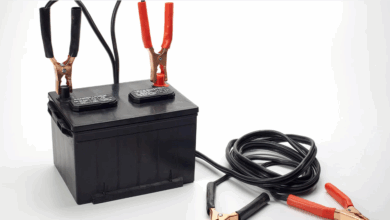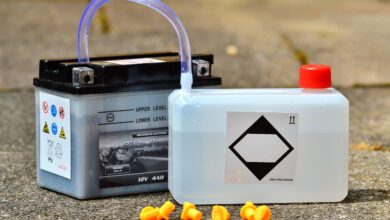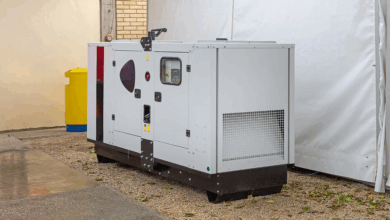Which Home Generator is Right for Your Home?

Choosing Your Power Partner: Which Home Generator is Right for Your Home?
Few things disrupt modern life quite like a power outage. Whether caused by a fierce storm, equipment failure, or grid overload, losing electricity means more than just sitting in the dark. It can mean spoiled food, frozen pipes, loss of heat or air conditioning, inability to work, security system failure, and even risk to those reliant on medical equipment.
Fortunately, home generators offer a reliable solution, providing backup power when the grid goes down. But generators aren’t one-size-fits-all. With different types, sizes, fuel sources, and features, choosing the right one for your home requires careful consideration. This article will guide you through the process, helping you select the power partner that best meets your needs and budget.
Why Consider a Home Generator?
Before diving into types, let’s quickly recap the benefits:
- Comfort & Convenience: Keep lights, HVAC, and appliances running.
- Safety: Power security systems, sump pumps, and medical equipment. Prevent frozen pipes in winter.
- Food Preservation: Keep refrigerators and freezers cold, saving hundreds of dollars in spoiled groceries.
- Work & Communication: Stay connected and productive if you work from home.
- Peace of Mind: Eliminate the stress and uncertainty of extended outages.
The Two Main Types: Standby vs. Portable
This is the fundamental choice you’ll need to make, and it largely depends on your needs, budget, and desired level of convenience.
-
Standby Generators:
- What they are: Permanently installed outside your home on a concrete pad, much like an air conditioning unit. They are connected directly to your home’s electrical system via an automatic transfer switch (ATS).
- How they work: When the power goes out, the ATS detects the loss, signals the generator to start, and automatically switches your home’s power source from the utility grid to the generator. When utility power is restored, the ATS switches back and shuts the generator off.
- Fuel: Typically run on natural gas or liquid propane (LP) from an existing line or a large storage tank.
- Pros:
- Automatic Operation: Seamless transition to backup power, even when you’re not home.
- High Power Output: Can power a few essential circuits, major appliances, or even your entire house.
- Safer: Installed away from the home, reducing carbon monoxide risk (though proper placement is still key).
- Less Hassle: No refueling during an outage (if connected to natural gas) and often quieter than portable units.
- Increased Home Value: A permanent installation is an attractive feature.
- Cons:
- High Upfront Cost: Significant purchase price plus professional installation (electrical, gas, concrete pad, permits).
- Requires Professional Installation: This isn’t a DIY project.
- Maintenance: Requires regular scheduled maintenance by a qualified technician.
- Portable Generators:
- What they are: Mobile units with wheels and handles, designed to be moved and set up manually.
- How they work: You wheel the generator outside, start it manually (usually pull-start or electric start), and connect appliances directly via extension cords or plug into a pre-installed manual transfer switch or generator-ready inlet box connected to specific circuits.
- Fuel: Most commonly run on gasoline, but also available in propane, diesel, or dual-fuel options.
- Pros:
- Lower Upfront Cost: Significantly cheaper to purchase than standby units.
- Versatility: Can be used for camping, tailgating, or jobsites in addition to home backup.
- No Installation Required (for basic use): Can be used right out of the box with extension cords (though a proper transfer switch is highly recommended for home circuit connection).
- Cons:
- Manual Operation: Requires you to be home, set it up, and start it.
- Limited Power: Typically power only essential appliances or a few circuits, not an entire house.
- Refueling: Requires manual refueling, potentially in bad weather or at night. Gasoline storage and shelf life can be issues.
- Safety Risks: Highest risk of carbon monoxide poisoning if not placed far away and downwind from windows and doors. Electrical backfeeding risk if not connected properly via a transfer switch.
- Noise: Generally louder than standby units.
Sizing Your Generator: Powering What You Need
Once you’ve decided on the type, the next crucial step is determining the right size, measured in wattage. An undersized generator won’t power everything you need; an oversized one costs more to buy and operate unnecessarily.
Follow these steps:
- List Essential Items: Walk through your home and list everything you absolutely need to run during an outage (refrigerator, freezer, sump pump, furnace fan, well pump, lights in key rooms, medical equipment, internet modem/router, phone chargers, etc.).
- Find Wattage: Check the power requirements (in watts) listed on the appliance data plates or in the owner’s manuals.
- Distinguish Running vs. Starting Watts: Some appliances with motors (refrigerators, pumps, HVAC fans) require a higher starting or surge wattage for a few seconds when they kick on, in addition to their lower running wattage to operate continuously. You need a generator that can handle the highest simultaneous surge load.
- Calculate Total Need:
- Add up the running watts of all items you want to run simultaneously.
- Identify the single item with the highest starting wattage.
- Add the total running watts to the highest single starting wattage. This gives you a good estimate of the maximum surge watts required.
- Example: Fridge (800 running, 1200 surge), Lights (500 running), Furnace Fan (700 running, 1000 surge). If you need fridge, lights, and fan: Total Running = 800 + 500 + 700 = 2000W. Highest Surge (Furnace) = 1000W. Estimated Generator Need = 2000W (running) + 1000W (surge) = 3000W surge capacity, with at least 2000W running capacity.
- Consider Future Needs: Might you add appliances later?
- Consult Online Calculators: Many generator manufacturers and retailers offer online wattage calculators to help you estimate your needs based on typical appliance usage.
- When in Doubt, Go Slightly Larger: It’s better to have a little extra capacity than not enough. However, dramatically oversizing isn’t necessary.
Generators are typically rated by their running wattage (sometimes called continuous wattage) and a higher starting wattage. Look for a generator whose running watts meet your total running needs and whose starting watts meet your peak surge requirement.
Fueling Your Backup Power
The fuel source impacts cost, storage, run time, and convenience.
- Natural Gas: Requires connection to an existing gas line. Pro: Unlimited supply during an outage (assuming the gas line is operational). Con: Dependent on the grid’s gas infrastructure. Common for standby generators.
- Liquid Propane (LP): Stored in a tank (like for a gas grill, or a larger residential tank). Pro: Storable, clean-burning, doesn’t degrade like gasoline. Con: Finite supply – tank size determines run time. Common for standby and larger portable generators.
- Gasoline: Most common for portable generators. Pro: Easily available at gas stations. Cons: Short shelf life (requires fuel stabilizer or rotation), highly flammable, produces more emissions.
- Diesel: Less common for residential, but used in some larger portables and commercial units. Pro: Fuel is more stable than gasoline, efficient under heavy loads. Cons: Requires a separate tank, fumes, can gel in very cold temperatures.
- Dual Fuel: Some portable generators can run on either gasoline or propane, offering flexibility.
Key Features and Considerations
Beyond type, size, and fuel, consider these:
- Automatic Transfer Switch (ATS): Essential for standby generators, providing automatic, safe power switching. Available as an option for some portable generators (connected to a generator-ready inlet box).
- Noise Level: Generators are noisy. Decibel ratings are provided. Consider placement and local noise ordinances. Standby units are often quieter or placed further away.
- Maintenance: All generators require regular maintenance (oil changes, filter replacements, testing). Standby units often have self-test modes. Consider ease of maintenance and availability of service.
- Installation (for Standby): This is a significant factor and cost. Requires a qualified electrician and possibly a plumber (for gas line) and concrete contractor. Permits are usually required.
- Run Time: How long will the generator run on a tank of fuel or a specific LP tank size at a given load?
- Outlets & Connection (for Portable): Ensure the generator has the right types and number of outlets for your needs. Consider if you’ll use a manual transfer switch (requires a specific outlet type).
- Electric Start: Much easier than a pull-start, especially for larger portable units.
- Inverter Technology: Found in some portable generators, provides clean, stable power safe for sensitive electronics like computers. Also typically quieter and more fuel-efficient. Usually lower wattage than conventional generators.
- Remote Monitoring: Some generators offer apps or monitoring systems to check status, fuel levels, and get alerts remotely.
Safety First!
Generator safety cannot be stressed enough.
- Carbon Monoxide: Generators produce lethal carbon monoxide fumes. NEVER run a generator indoors, in a garage, basement, crawl space, or even right outside windows or doors. Place it far away (at least 15-20 feet) from your home and downwind. Install carbon monoxide detectors in your home.
- Electrical Safety: NEVER plug a generator directly into a wall outlet (backfeeding). This can electrocute utility workers or your neighbors. Use a properly installed transfer switch (automatic or manual) or connect appliances directly using heavy-duty outdoor-rated extension cords.
- Fuel Handling: Store fuel safely in approved containers away from ignition sources. Don’t refuel a hot generator.
- Grounding: Follow manufacturer instructions for grounding the generator.
Conclusion
Choosing the right home generator is a critical decision that provides security and comfort during uncertain times. There’s no single "best" generator; the ideal choice depends on your specific power needs, budget, the frequency and duration of outages in your area, and your desired level of convenience.
Take the time to assess your requirements, compare the pros and cons of standby versus portable units, calculate your wattage needs carefully, and consider the fuel type and features that matter most to you. For standby generators, professional consultation for sizing and installation is essential. For portable units, prioritize safe usage and proper connection methods.
By making an informed decision, you can ensure your home and family remain safe, comfortable, and powered through whatever comes your way.
Frequently Asked Questions (FAQs)
-
Q: How much does a home generator cost?
- A: Costs vary widely. Portable generators typically range from a few hundred dollars for small units up to $4,000 – $5,000 for larger, feature-rich models. Standby generators start around $4,000 – $6,000 just for the unit, and installation costs (electrical work, gas line, pad, permits) can add another $4,000 to $10,000+, depending on complexity, bringing the total to $8,000 – $16,000 or more.
-
Q: Can I install a standby generator myself?
- A: No, standby generator installation is complex and involves connecting to your home’s electrical and fuel systems. It requires licensed electricians and often plumbers or gas fitters. Attempting DIY installation is dangerous and may violate electrical codes and void warranties.
-
Q: How long can a generator run?
- A: It depends on the fuel source and load. Portable gasoline generators typically run for 8-12 hours on a tank at half load. Portable propane or natural gas units (like standby) can run as long as the fuel supply lasts. A large propane tank can power a standby unit for days or even weeks, while a natural gas line provides continuous fuel.
-
Q: Do I need a transfer switch?
- A: For safety and convenience, yes, especially if you plan to power hardwired appliances or circuits (like your furnace or well pump). A transfer switch prevents dangerous backfeeding into the utility grid. Standby generators come with an ATS. For portable generators, a manual transfer switch or generator inlet box wired to essential circuits is highly recommended over using extension cords for everything.
-
Q: How often should I maintain my generator?
- A: Follow the manufacturer’s recommended schedule, typically involving regular oil changes, filter replacements, and general inspections based on usage hours or calendar time (e.g., annually). Standby generators often have automatic exercise modes to run weekly, keeping components lubricated and ensuring readiness.
- Q: Are noisy generators bad?
- A: Noise is a common characteristic of generators, but excessive noise can be a nuisance or violate local noise ordinances. Compare the decibel ratings (lower is better). Inverter generators and some standby units are generally quieter than conventional portable models. Placement far from your home and neighbors helps mitigate noise.




![How to Bypass CO Sensor on Generator – [4-Step Safety Guide]](https://www.generator411.com/wp-content/uploads/2025/08/co-sensor-on-generator-390x220.png)